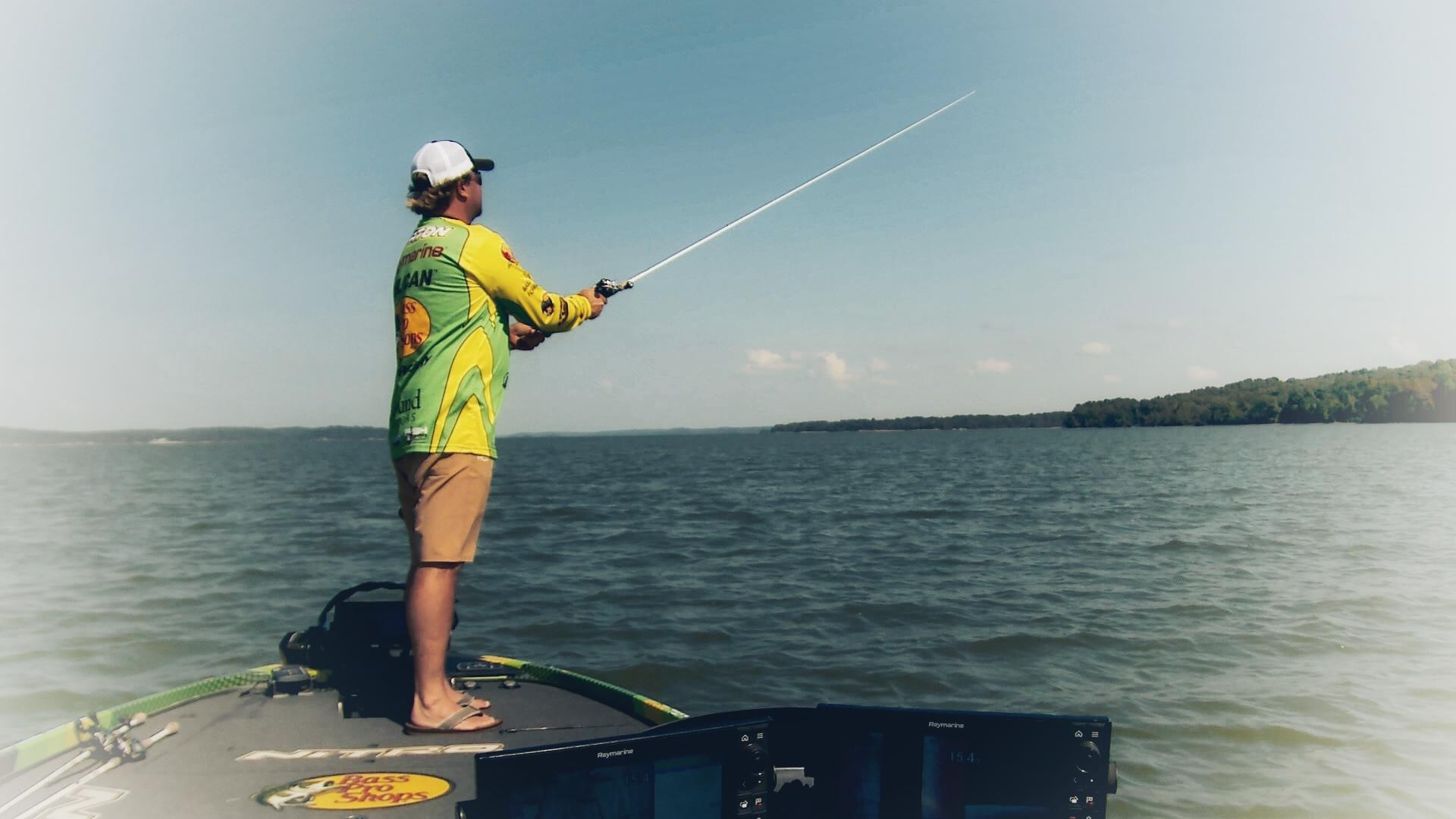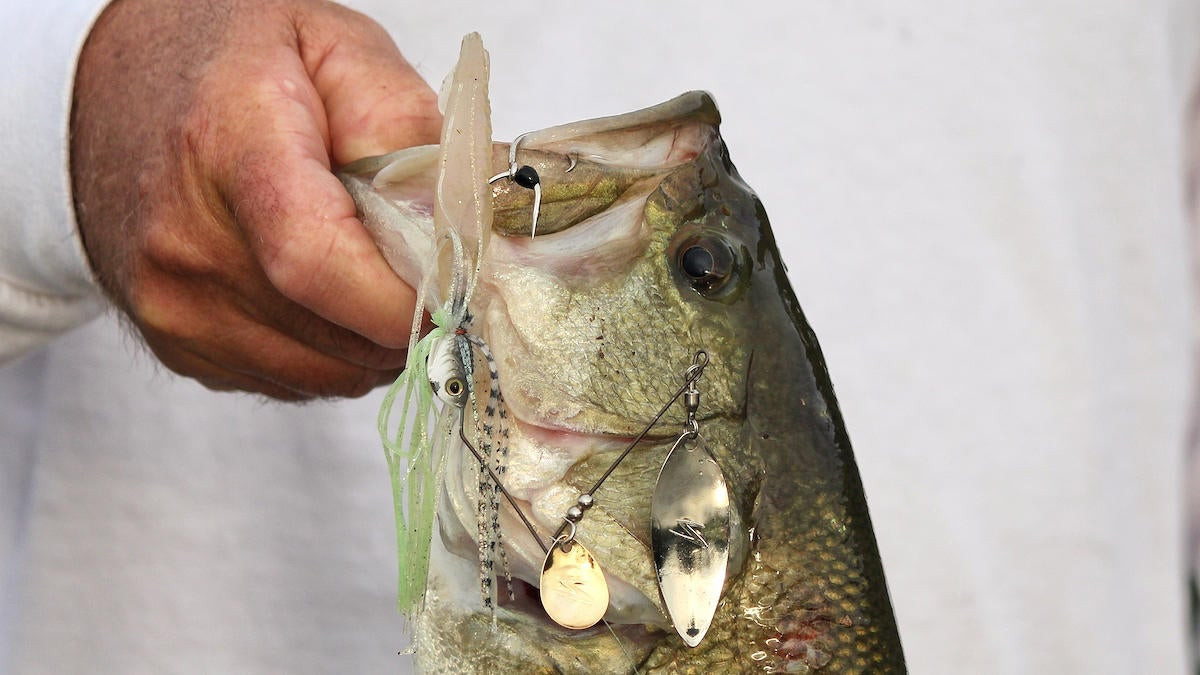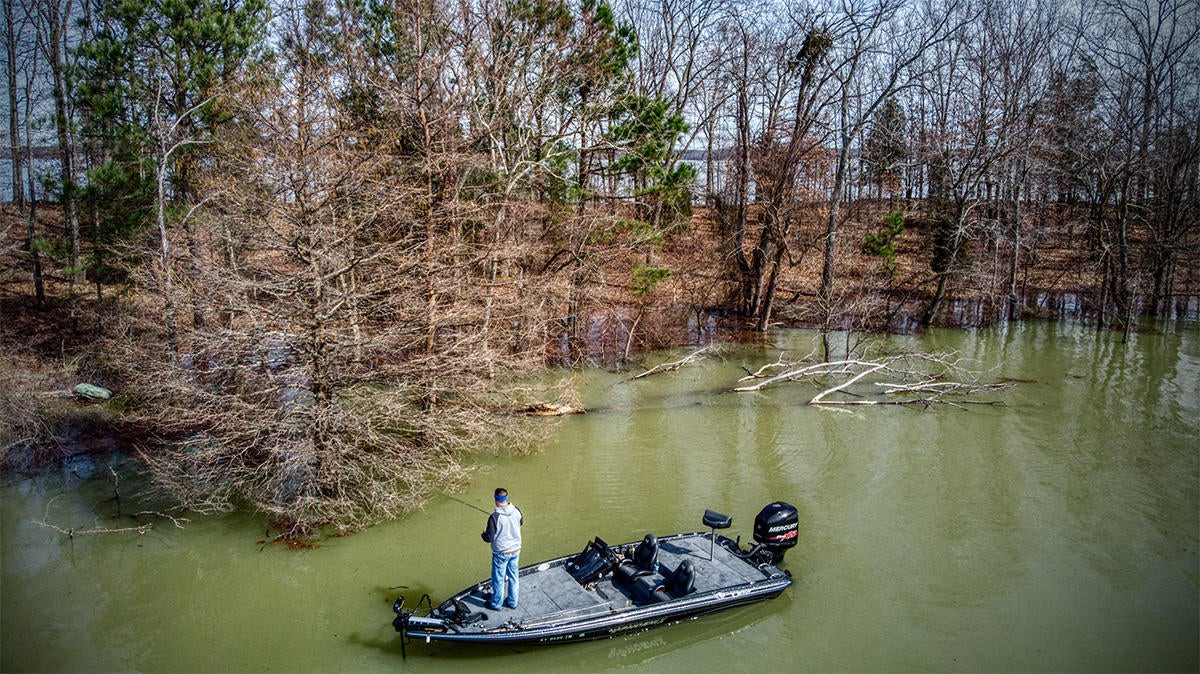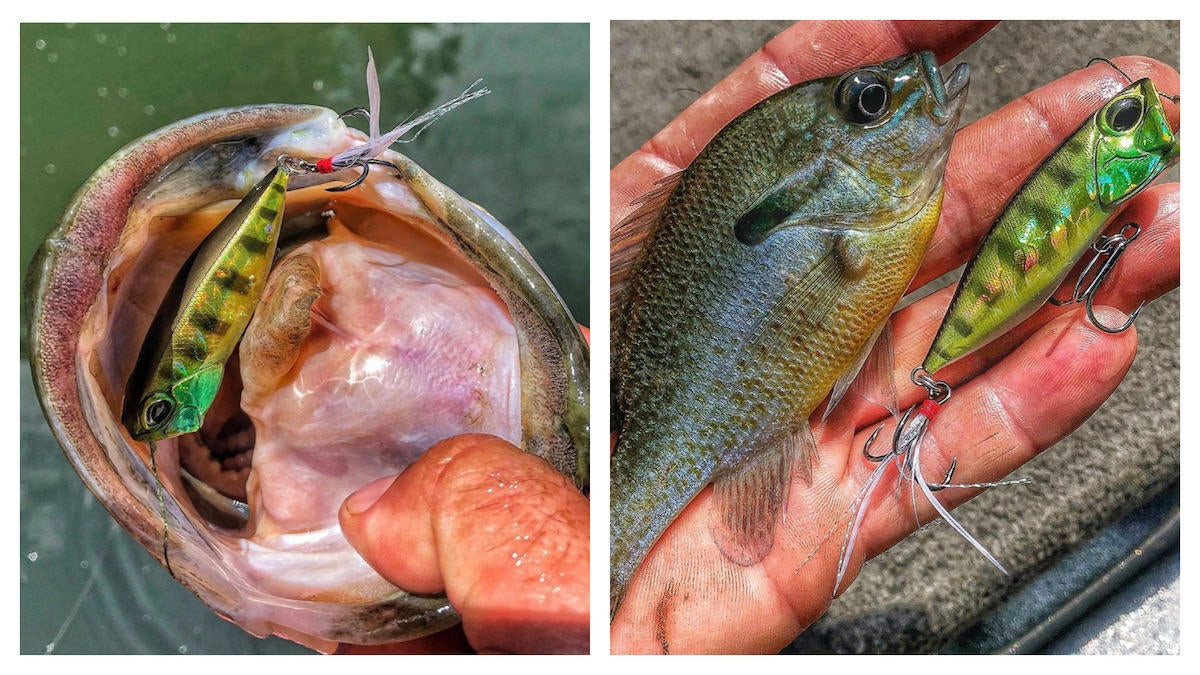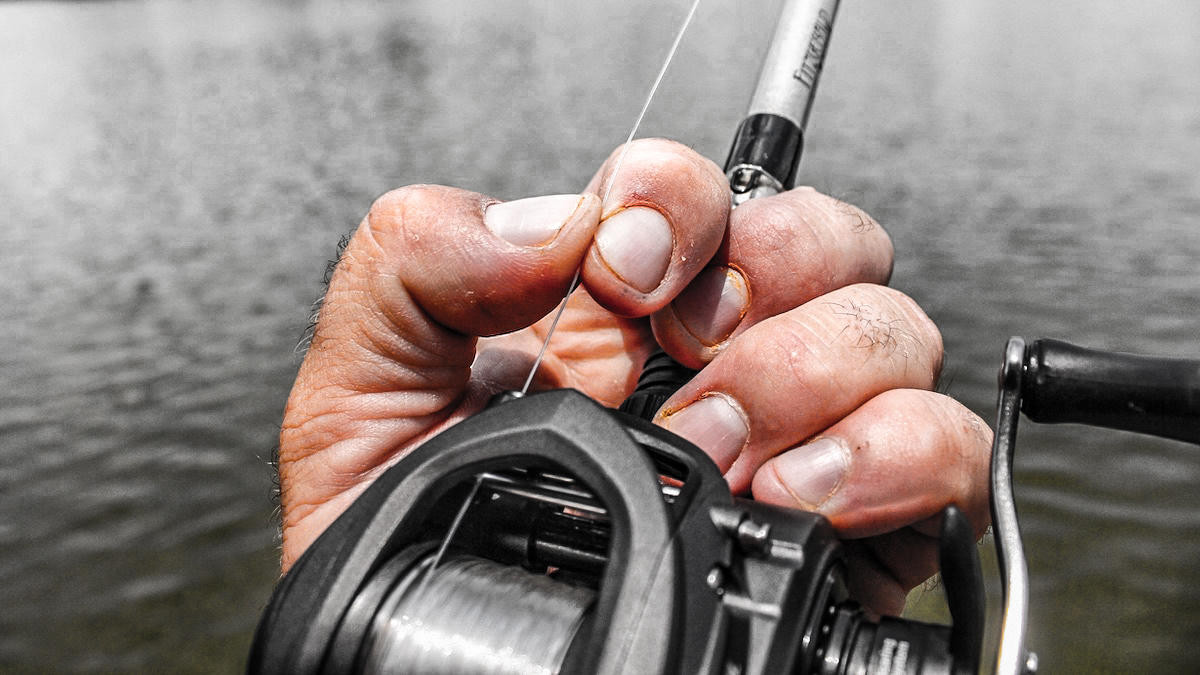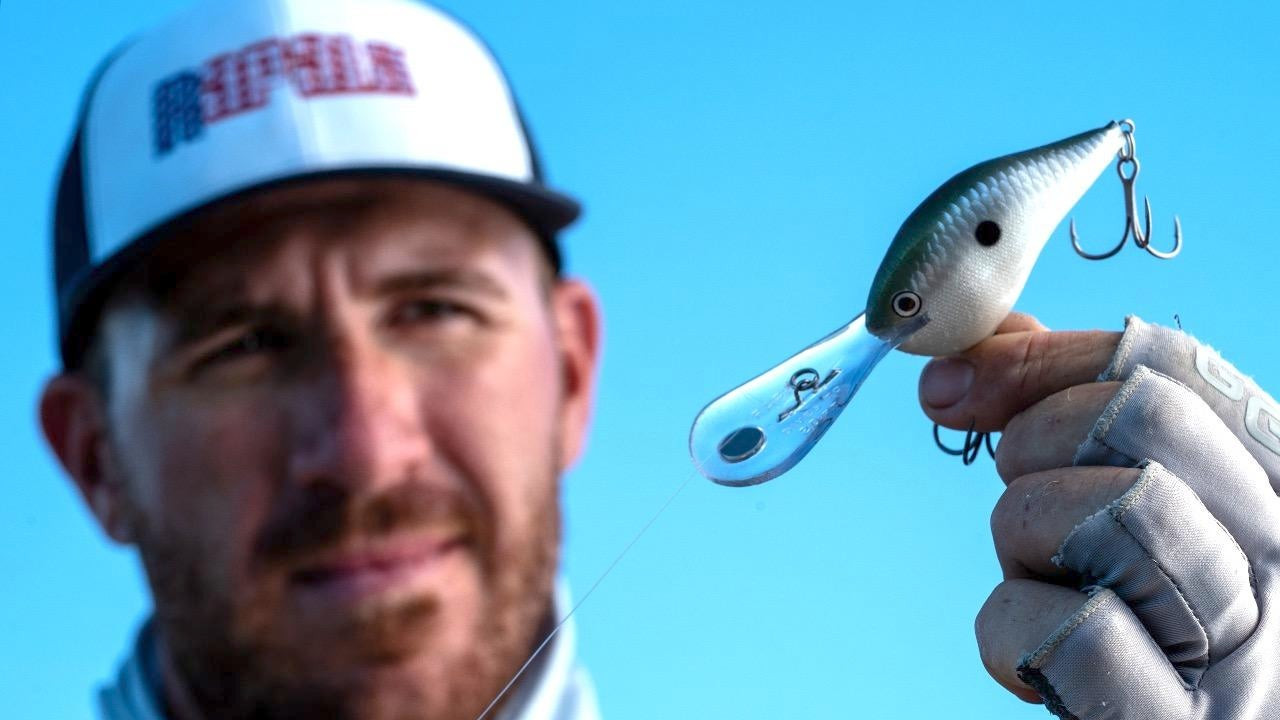The bobber stopper, I can only assume based on its name, was originally designed to hold corks and bobbers in position. It was largely for anglers fishing with live bait, I continue to assume. But bass anglers using artificial baits quickly applied the bobber stopper to the bass fishing world and the vast majority of anglers now use these tiny rubber treasures to secure their Texas rig weights.
However, these bobber stoppers come in quite handy for other little bass fishing hacks as well.
Lightweight Carolina rig

A light Carolina rig, or split-shot rig, is a very effective presentation when you’re wanting to drag a bait over a flat, through submerged vegetation or along seawalls. For this type of stuff, you don’t need a big, heavy weight and a 4-foot leader like you might when fishing a Carolina rig out deeper. We’re talking more like something around a 1/4-ounce weight and a 12- to 18- inch leader.
But if you put this rig together like a traditional Carolina rig with a swivel, you’re locked in on the length of your leader unless you retie. Instead, I like to take a bobber stopper and slide it up my main line, followed by a VMC Tungsten Weight and then another bobber stopper. Tie a 4/0 EWG hook on and now you have a lightweight Carolina rig that you can adjust the leader length of by simply sliding the two bobber stoppers and weight. The really cool thing is you can actually slide the setup all the way down to the eye of the hook and go from a Carolina rig to a light weight Texas rig and then back again without ever retying if you want.
The limitations of this rig come when you move up to heavier weights or down to lighter lines. The heavier weights will cause the bobber stoppers to slide down the line on the cast. Likewise the bobber stoppers won’t grip 10-pound test as well as 15-pound test. There are actually some bobber stoppers that are different sizes for different sized lines. If you find options like this, its best to pick a bobber stopper for a line diameter smaller than you’re using.
Their ratings are intended to hold a bobber in place, not a weight. So the smaller sizes will hold onto bigger diameter line even better against the pressure of the weight in your back cast. But you don’t want to go all the way to a bobber stopper rated for an 8-pound diameter line for example with 17-pound test because that big of a difference can actually lead to the line ripping through the bobber stopper.
If your weight continues to slip and you only have one size bobber stopper, you can also try stacking two bobber stoppers on either side of the weight and that will usually do the trick.
Line tamer for topwaters

This one I actually learned from professional angler John Cox. During a photo shoot I noticed he had two bobber stoppers pulled down snug to the eye of his Berkley Spin Rocket. To start with, I thought maybe he just had a flipping setup on that rod and didn’t want to waste the bobber stoppers so he tied the topwater on for a quick picture and left the bobber stoppers. I mean, you never know with Cox… and that’s what I love about the guy.
So I asked if that was the case and he answered “no” with a laugh. Then he explained that he uses the bobber stoppers to keep his braided line out of the prop of his topwater. Genius.
A lot of anglers prefer to throw prop-style topwaters on braided line in order to increase the distance they can throw the bait. The braid also comes in handy when battling big bass that try to bury up in dense vegetation. But the drawback of the limp braid is that it gets tangled up in the front prop of a bait like this between twitches. Then the bait has to be retrieved in order to untangle the line from the prop.
One solution many anglers use is a braid-to-monofilament leader. The stiffer monofilament stands out and doesn’t get tangled in the prop as the lure moves towards you, but you still get the benefits of a braided main line. The drawback here is that you’re adding another knot between the angler and the fish which increases the work when rigging the lure and adds one more potential point of failure.
So, Cox uses two stacked bobber stoppers to keep the line rigid right at the eye of the bait and keep his braid from tangling in the prop.
Keep your rods and reels ready to rig

If you’ve ever bought a Zebco reel, you’ll remember the little plastic tab tied to the line that’s sole purpose was to keep the line from falling into the reel before someone bought it. A bobber stopper offers up a great solution for that problem with some bait caster setups as well.
When you break off a bait or decide to cut a bait off one rod and put it on another, how do you store that rod? Do you just reel the line up into the reel before putting it in the rod locker? If so, you know how frustrating it is when you reach for that rod the next time and have to run the line back through the reel guide and then all of the rod guides. Even more frustrating when you forget to go through the reel guide and have to start all over. The most frustrating, perhaps, is when you do all of that correctly, only to realize the tag end of the line had gotten under another loop of line in the spool and now you have to redo it all again.
One way to prevent all of this is to tie a loop knot in your line and then secure that around your reel handle. Pull a bow in the line and give the rod a spin and you’re ready to slide the rod in a Rod Glove where it will be ready to go the next time you need it. The only problem here is that you’ll definitely waste some line where you tied the loop knot and depending on the line you’re using, you’ll create a good bit of memory in that first 6 feet of line or so where it’s pulled tight against the tip of the rod.
But if you have rods with micro guides, you can slide a bobber stopper on the tag end of your line and reel that up to your rod tip, slide the rod in a Rod Glove and now its ready to go until you need it again without wasting an inch of line. The same thing can be done to store reels with smaller diameter guides on them.
For any other rod or reel where a bobber stopper alone won’t do the trick, you can keep a few pieces of cork in your rod locker to do the same thing. Just put the cork on first, then add the bobber stopper and your setup will be there when you need it.
Final thoughts

I really believe that bobber stoppers are one of the more underutilized tools available to bass anglers. They’re probably the cheapest bass fishing tackle you can possibly buy, but that minuscule purchase can make an enormous difference on the water. With these small pieces of rubber, you’ll be able to rig a quick Carolina rig, fish topwaters with less hassle and store your rods and reels easier. For just a few bucks, that’s some serious value.






